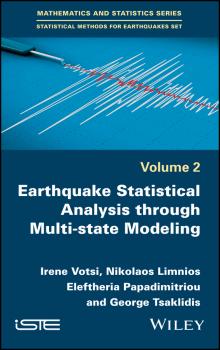ТОП просматриваемых книг сайта:
Nikolaos Limnios
Список книг автора Nikolaos LimniosАннотация
Fault tree analysis is an important technique in determining the safety and dependability of complex systems. Fault trees are used as a major tool in the study of system safety as well as in reliability and availability studies. The basic methods – construction, logical analysis, probability evaluation and influence study – are described in this book. The following extensions of fault trees, non-coherent fault trees, fault trees with delay and multi-performance fault trees, are also explained. Traditional algorithms for fault tree analysis are presented, as well as more recent algorithms based on binary decision diagrams (BDD).
Аннотация
This book provides a pedagogical examination of the way in which stochastic models are encountered in applied sciences and techniques such as physics, engineering, biology and genetics, economics and social sciences. It covers Markov and semi-Markov models, as well as their particular cases: Poisson, renewal processes, branching processes, Ehrenfest models, genetic models, optimal stopping, reliability, reservoir theory, storage models, and queuing systems. Given this comprehensive treatment of the subject, students and researchers in applied sciences, as well as anyone looking for an introduction to stochastic models, will find this title of invaluable use.
Аннотация
Reliability and survival analysis are important applications of stochastic mathematics (probability, statistics and stochastic processes) that are usually covered separately in spite of the similarity of the involved mathematical theory. This title aims to redress this situation: it includes 21 chapters divided into four parts: Survival analysis, Reliability, Quality of life, and Related topics. Many of these chapters were presented at the European Seminar on Mathematical Methods for Survival Analysis, Reliability and Quality of Life in 2006.
Аннотация
Earthquake occurrence modeling is a rapidly developing research area. This book deals with its critical issues, ranging from theoretical advances to practical applications. The introductory chapter outlines state-of-the-art earthquake modeling approaches based on stochastic models. Chapter 2 presents seismogenesis in association with the evolving stress field. Chapters 3 to 5 present earthquake occurrence modeling by means of hidden (semi-)Markov models and discuss associated characteristic measures and relative estimation aspects. Further comparisons, the most important results and our concluding remarks are provided in Chapters 6 and 7.
Аннотация
Statistical Models and Methods for Reliability and Survival Analysis brings together contributions by specialists in statistical theory as they discuss their applications providing up-to-date developments in methods used in survival analysis, statistical goodness of fit, stochastic processes for system reliability, amongst others. Many of these are related to the work of Professor M. Nikulin in statistics over the past 30 years. The authors gather together various contributions with a broad array of techniques and results, divided into three parts – Statistical Models and Methods, Statistical Models and Methods in Survival Analysis, and Reliability and Maintenance. The book is intended for researchers interested in statistical methodology and models useful in survival analysis, system reliability and statistical testing for censored and non-censored data.





